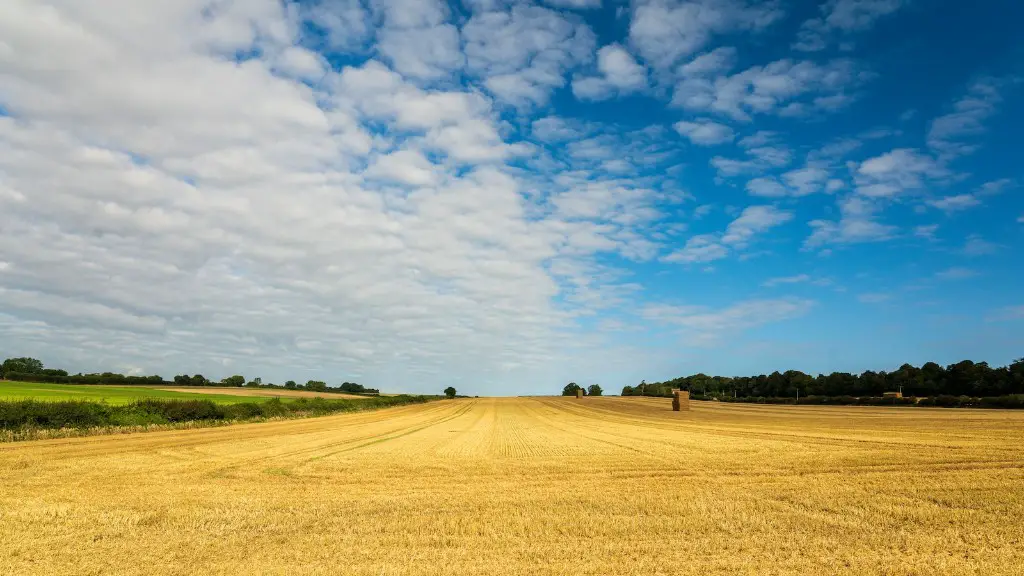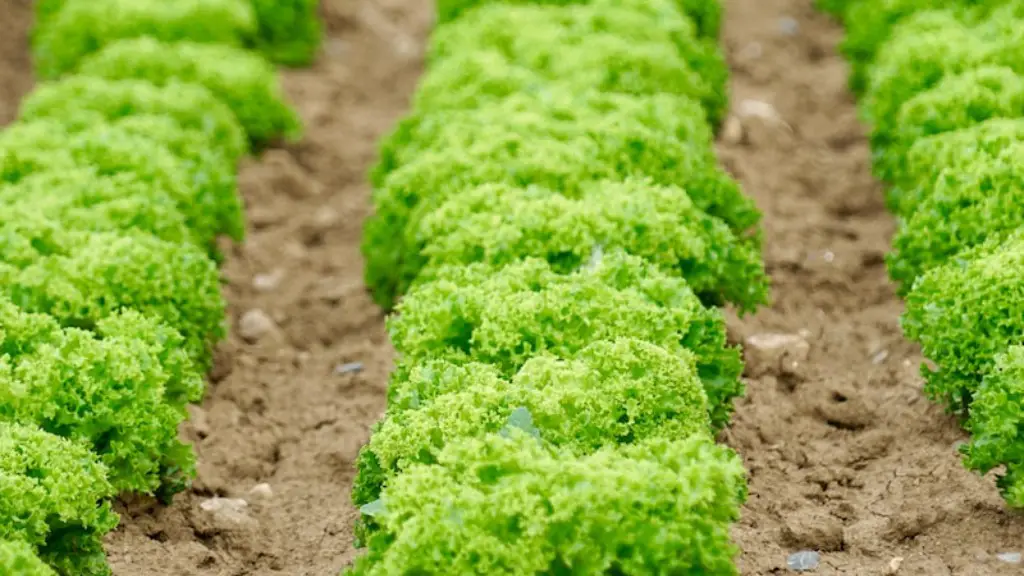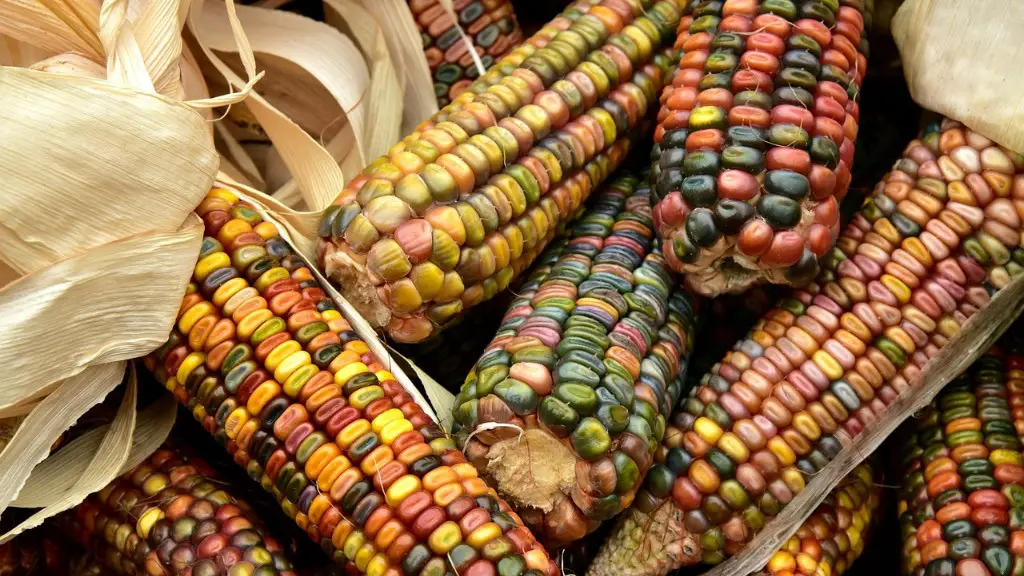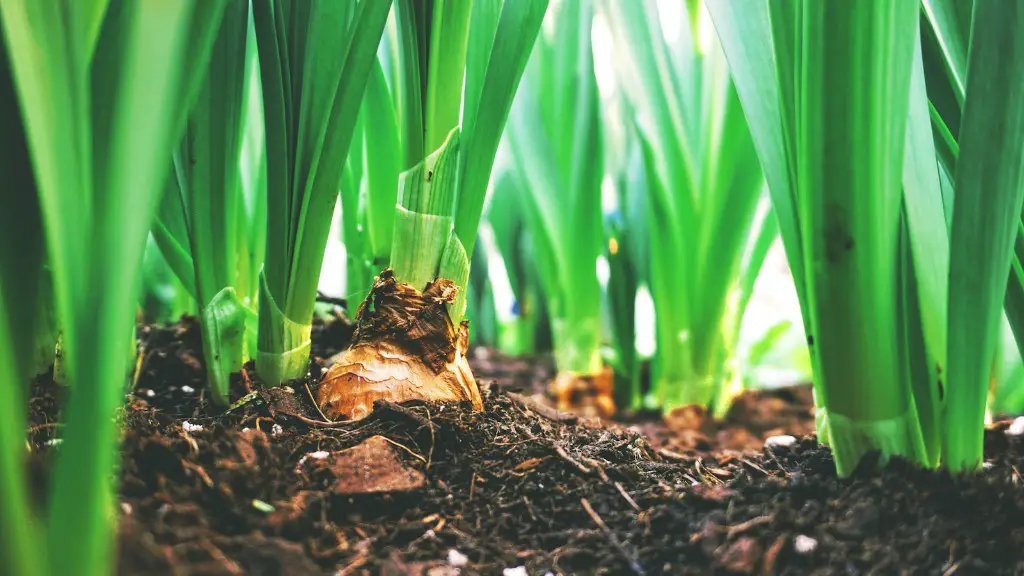Agricultural activities have a direct impact on the emission of nonpoint source pollutants. Nutrient enrichment of water bodies, accelerated erosion and deposition of soil particles, and pesticide transport are some of the most severe impacts. Excessive fertilizer use is one of the most commonly identified contributors to nonpoint pollution in agricultural areas. Nitrogen and phosphorus found in fertilizer can lead to the growth of algae in water bodies, creating algal blooms and resulting in high levels of oxygen consumption that can lead to death of aquatic species.
The clearing of land for agricultural production also greatly increases nonpoint pollution through accelerated erosion. Soil particles and sediments can be transported in runoff during rain events, ending up in nearby water bodies. The pH of the water body becomes lower and turbidity levels increase, causing disruption in the aquatic environment. Soil erosion can also lead to increased nutrients in the water, causing eutrophication.
The application of pesticides on fields can also cause runoff that affects adjacent water sources. Pesticides killing weeds and pests in fields can easily be washed away by rain. These pollutants can eventually reach nearby streams and rivers, and can be highly toxic to aquatic life. Herbicides and heavy metals are particularly dangerous, which is why use of pesticides must be done responsibly in accordance with requirements.
Animal management is another significant contributor to nonpoint source pollution. Waste from animals can easily seep into groundwater sources as it decomposes, increasing levels of bacteria such as E. coli and other pollutants such as nitrogen and phosphorus. Improper or inadequate storage of livestock waste can also lead to high levels of pollutants entering nearby water bodies.
There are also other types of nonpoint pollutions coming from agricultural activities, such as atmospheric atmospheric pollution from agricultural burning, leakage of chemicals from wastewater treatment systems, and the use of wastewater for irrigation. The key to reducing the amount of nonpoint source pollution from agriculture is to implement best management practices and proper monitoring. This can help to minimize potential impacts of agricultural activities on surface and groundwater sources.
Nitrogen and Phosphorus in Fertilizer
Nitrogen and phosphorus are two of the most commonly used elements in commercial fertilizers, and their runoff can cause severe damage to surface and groundwater sources. Nitrogen, phosphorus, and other nutrient pollution can act as an artificial fertilizer, resulting in the growth of excess algae in water bodies that can cause habitat disruption and diminish water quality. The runoff of nitrogen and phosphorus can also result in eutrophication, which can lead to death of fish and other aquatic species in streams, ponds and lakes. To reduce this type of pollution, farmers must be aware of the amount of fertilizer used and ensure it is within the recommendations of applicable regulations.
Agricultural producers can also practice Integrated Nutrient Management (INM). This involves the management and utilization of sources of soil fertility and their effective utilization for crop production. INM strategies can help to ensure that only the necessary amount of fertilizers are applied. Soil testing is also a recommended practice, as this can help to determine the amount and type of fertilizer needed for optimal crop production.
Crop rotation is another important practice that can reduce the risk of nonpoint source pollution. Crop rotation can help to reduce the amount of pesticides needed, as well as reduce soil erosion and nutrient runoff by keeping soil more covered. Similarly, cover crops can also be used to reduce erosion and nutrient runoff, as their roots help to keep soil in place and their vegetative cover shields the soil from erosive forces.
Clearing of Land
Deforestation is often inevitable when converting forest land into agricultural land. However, land clearing can cause serious erosion and sedimentation issues if not done in a sustainable manner. The loss of vegetative cover on slopes often enables water to move faster, leading to increased soil erosion and sediment deposition in nearby water bodies. Poorly constructed terraces, insufficient vegetative cover and poor land management practices can all contribute to an increase in sedimentation and erosion.
To mitigant these impacts, better land management that takes into account soil erodibility and vegetative cover should be implemented. The use of contour farming and terracing can reduce the amount of sediment and runoff from slopes, while vegetative covers and strip cropping can help keep soil in place. Some governments also provide financial incentives and subsidies to encourage better management practices, such as no-tillage and conservation tillage, which can reduce runoff and erosion and minimize soil disturbance.
Forestry practices such as agroforestry can also be implemented to reduce the risks of nonpoint pollution from land clearing. Agroforestry combines multiple vegetation management practices, such as intercropping, alley cropping and other forms of land use management. This can provide more effective vegetative cover on slopes and help to reduce runoff, soil erosion and nutrient loading.
Pesticides Applications
Pesticides are essential for agricultural production but can be a source of nonpoint source pollution if used recklessly. Pollutants from pesticides can reach nearby water bodies via runoff from treated fields. Pesticide runoff can be highly toxic to aquatic life, causing mortality and distorting the food chain. To reduce this pollution, farmers must be aware of the amount and types of pesticides used, and follow recommendations regarding dilution rate and timing of applications.
Integrated pest management (IPM) is also important in reducing the need for excessive pesticide applications. IPM utilizes existing pest management strategies such as beneficial insects and crop rotation, to make more efficient use of pesticides and reduce the amount used. Cultural control such as proper soil management and weed management are also important, as this can help to reduce the pest population or prevent it from increasing.
In addition to IPM, buffer strips can also be applied as a management practice around water bodies. Buffer strips are vegetated areas around water bodies that prevent runoff from entering them. They help to reduce the amount of sediment and nutrients entering the water body, making it healthier and protecting aquatic organisms. Buffer strips can also be used to trap pesticides, reducing the amount that enters the water.
Animal Management
Animal management has been identified as one of the major sources of nonpoint source pollution in agricultural areas. Manure and other wastes from animals can seep into groundwater sources and increase levels of bacteria, as well as nitrogen and phosphorus, leading to eutrophication and other problems. To reduce this pollutant loading, farmers should be aware of the amount of waste produced and its management.
Proper storage and handling of animal waste can go a long way towards reducing its impacts. Livestock should be kept away from water sources and waste should be stored in properly constructed storage units. Manure can also be used as a fertilizer, but care must be taken in its application and handling. Waste should be composted properly, and the amount and type of fertilizer used should be in accordance with local regulations.
Animal grazing is another source of nonpoint source pollution if not done properly. Overgrazing on slopes can increase sediment runoff and nutrient enrichment, which could lead to eutrophication in nearby water bodies. To reduce this pollution, farmers should know their grazing capacity and implement rotational grazing practices to maintain the health of their pastures.
Atmospheric Pollution
Atmospheric pollutants such as greenhouse gases and particulate matter are also considered to be sources of nonpoint source pollution, although their impacts are often less direct than those of other sources. Burning of agricultural land to prepare it for planting and harvesting can emit air pollutants that can travel with the wind and end up in water sources. These pollutants can also travel long distances, impacting water sources far from their source.
Agroforestry, the use of trees in agricultural production, can be utilized to help reduce atmospheric pollution from agricultural activities. Agroforestry systems have been shown to sequester carbon and reduce levels of particulate matter produced in preparation of the land. In addition, agroforestry can also provide other benefits such as protection of soil and water resources and reducing the amount of pollutants entering streams and rivers.
It is also important to consider how agricultural production methods affect atmospheric pollution. For example, tilling before planting can release large amounts of aerosols and gases into the atmosphere, leading to pollution. To reduce these effects, farmers should consider no-till agriculture or minimum tillage practices. This can help to retain soil moisture, reduce erosion, and keep some of the pollutant particles from entering the atmosphere.





